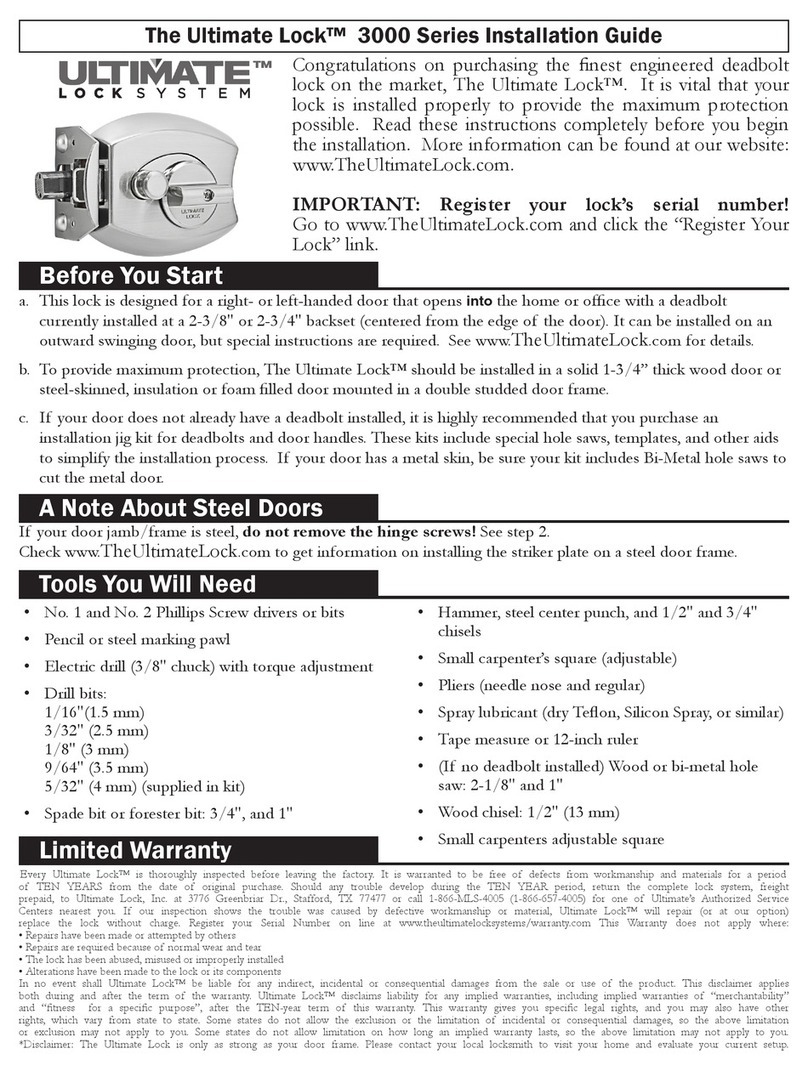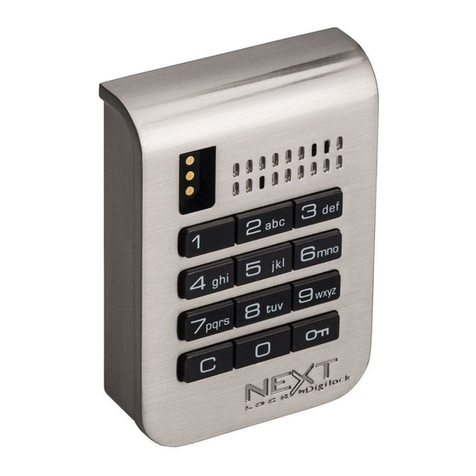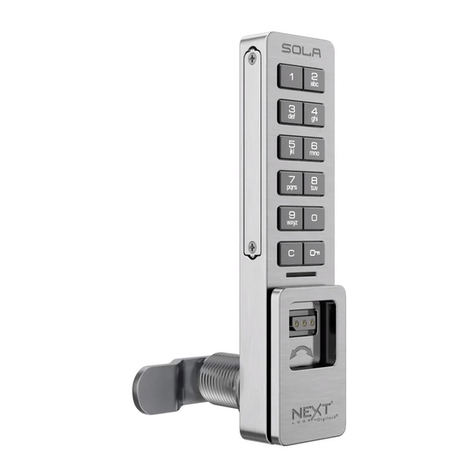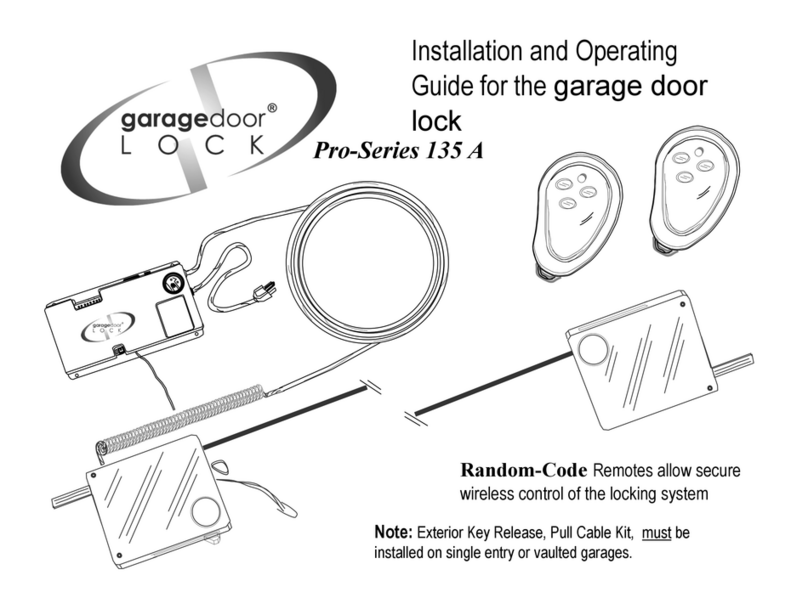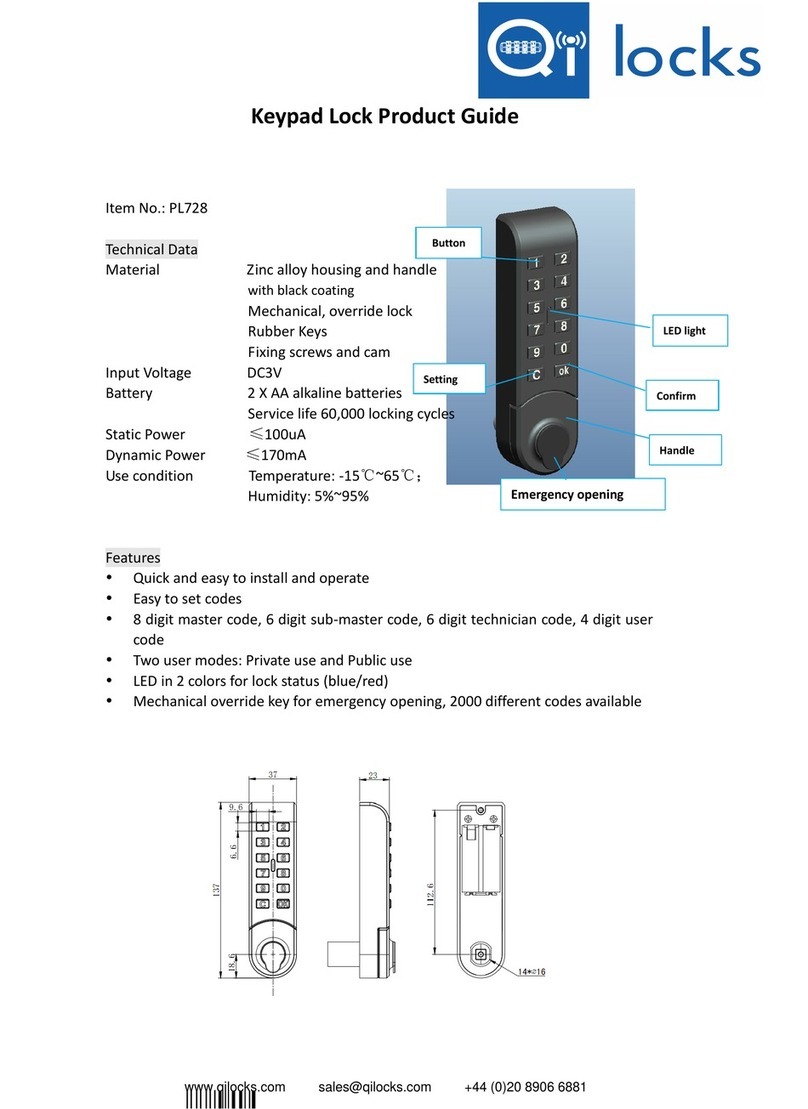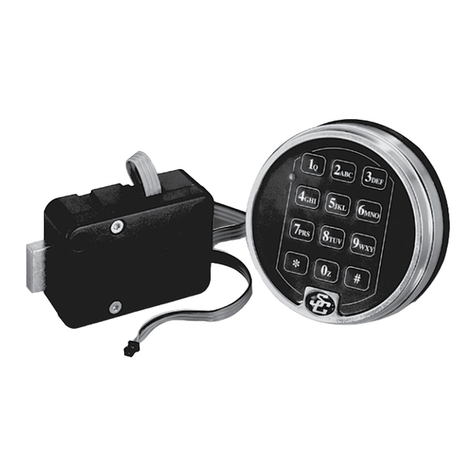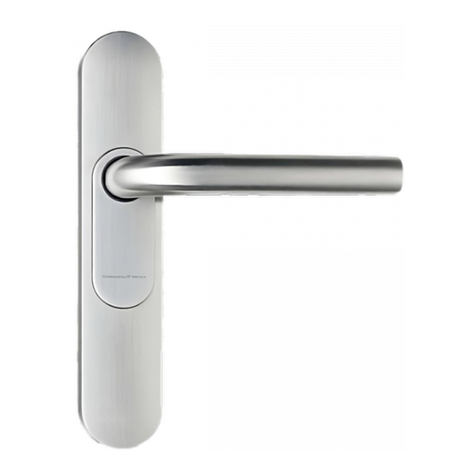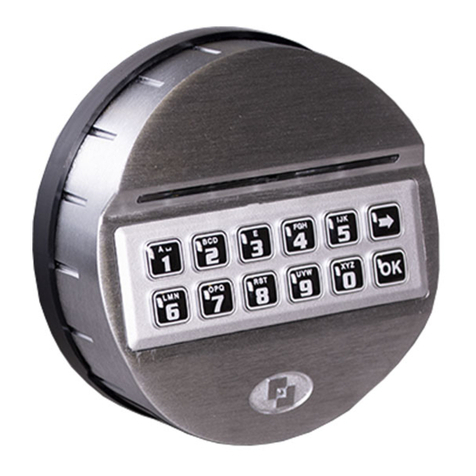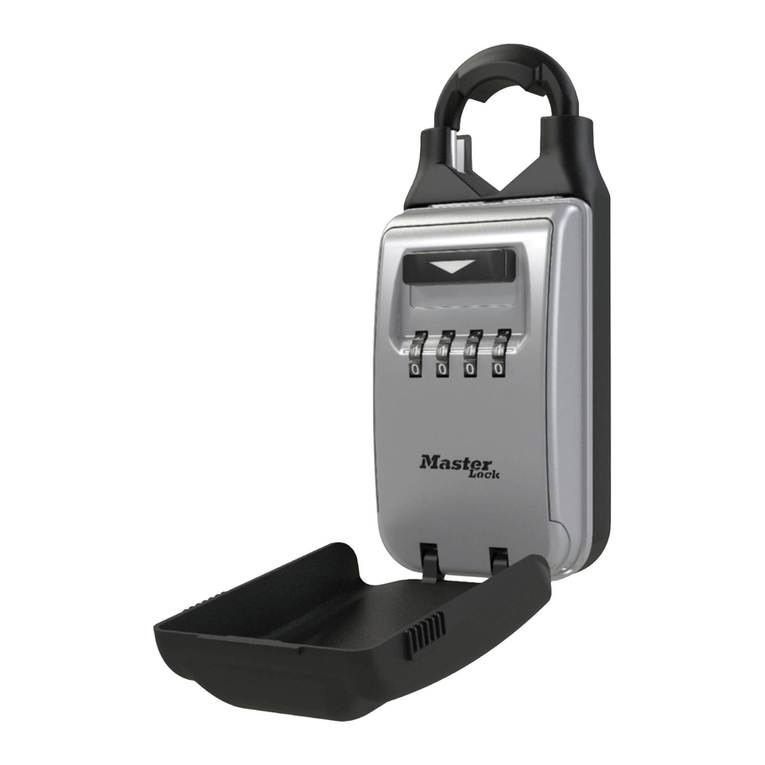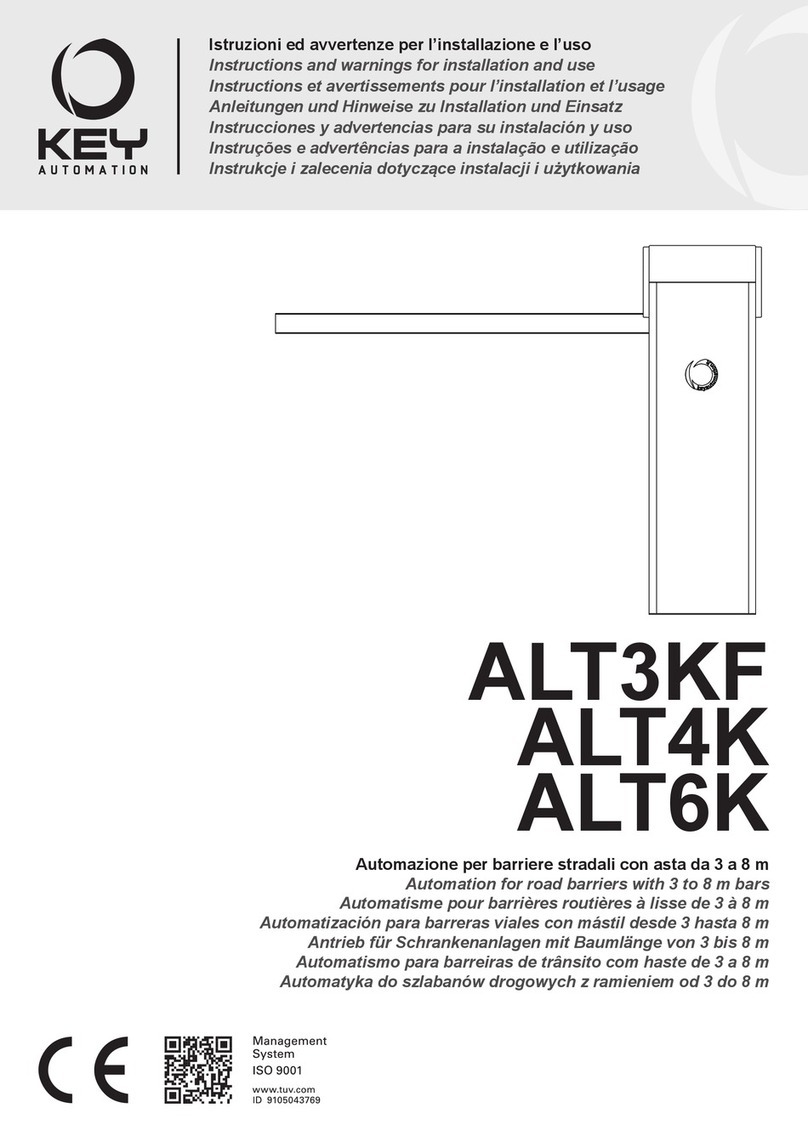
Problem: Having diculty assembling or
operating the lock.
Solution: Check all the screws have not
been overtightened.
Problem: Snib falling out.
Solution: Refer to instruction Step 4 (E-H)
and ensure the snib lugs fit
correctly within the handle.
Problem: Cannot remove the Cylinder.
Solution: Check the lock body tongue is
fully extended by depressing
the firing pin.
Problem: Cannot lock the handle with
either the snib or cylinder.
Solution: Check the lock body tongue is
fully extended by depressing
the firing pin.
Problem: The cylinder will not engage the
lock body.
Solution: When operating the cylinder
with the key, check that the
cylinder cam rotates towards
the front edge of the door.
Cylinder & handle assembly:
A. Insert the cylinder so the cam rotates toward the
front of the door.
B. Insert the key and turn to the locked position.
Insert the cylinder retaining screw. Only use the
37mm cylinder retaining screw provided with the
lock. Others may be too short. Do no over
tighten.
C. Test that the tongue does not depress.
D. Turn the key to the unlocked position, then
remove the key.
E. Select the inside handle with the snib hole.
F. Hold the snib lever horizontally & fully insert into
the handle. Rotate to a vertical position to secure.
G. Turn the handle to point to the hinges.
H. Holding the snib vertically and handle lever in a
horizontal position, place the handle assembly
over the lock body on the inside of the door.
I. Insert the connecting rod (with the spring facing
up), through the lock body as shown. Note: The
connecting rod and spring are designed to be a
firm fit, keeping the handles horizontal.
J. Repeat for the outside handle (with no snib hole),
then assemble together with the 2 x 28mm handle
screws supplied. Do not over tighten. Insert the
screw cover caps ONLY after you have completed
step 6.
Tightening the screws:
Using the Phillips head screwdriver, firmly tighten the 1 x 37mm cylinder retaining screw followed by the lock body 2 x 13mm countersunk fixing screws on the front
edge of the door. Lastly tighten the 2 x 28mm countersunk handle screws. Please note: Do not over tighten and do not use powered screwdriver!
Installation of the striker plate:
A. Ensuring the door is unlocked, close the door and
with a pencil, mark the top & bottom of the main
lock body tongue on the door jamb.
B. Place the striker plate hard up against the door
stop and centralist the strike plate’s rectangular
tongue cut out over the pencil marks on the jamb.
C. Mark the screw holes using a 1/16” drill bit to avoid
splitting the timber. Remove the striker plate and
cut out the tongue slot as marked, to a minimum
of 16mm deep. Install the striker plate with the
25mm screws provided.
D. Test the lock to ensure the lock tongue is fully fired
into the cut out. Adjust the cut out as necessary.
Important: Successful operation of the lock requires
that the firing pin be depressed against the striker
plate. Jamb and door clearance should be 3mm.
**Important information: The snib lever is not a
security device. It is designed as a temporary
measure only. Use the key to deadlock the lock for
security. When locking with the key internally, we
recommend leaving the key in close proximity to the
lock where it can easily be accessed in case of a fire
or other emergency. When removing the key, be
careful not to overturn the key in case you unlock the
lock unintentionally.
Step 6 Troubleshooting
Testing the lock operation:
A. To unlock the door, insert the key into the cylinder and rotate towards to the front edge of the
door. You should hear a ‘click’ sound as the cylinder cam engages the lock. If the Cylinder does
not rotate and you cannot hear a ‘click’ sound, see troubleshooting section. At this point the
handles and snib are now operational.
B. Test the lock by cranking either handle lever downward. This should retract the lock body tongue.
C. Before you can operate the cylinder or the snib, you must depress the firing pin to fully extend the
lock body tongue to simulate the door being closed.
D. In the unlocked position depress the firing pin to ensure the lock tongue is fully extended. To
activate the snib lock rotate the snib toward the hinges.
**Please read important information regarding snib lock action below.
Lock Body Tongue
Inside
Handle
Inside
Handle
Turn the handle downwards to retract
the lock body tongue and close the door.
Firing Pin
Step 7
Step 6
Step 4Step 5
Step 4
Step “A & B”
37mm
Cylinder
Retaining
Screw
Cam
Rotation
Step “H & I”
Connecting
Rod & Spring
37mm
Cylinder
Retaining
Screw
Snib
16mm Deep
Minimum
Marked Lines
Door
Jamb
Door
Stop



